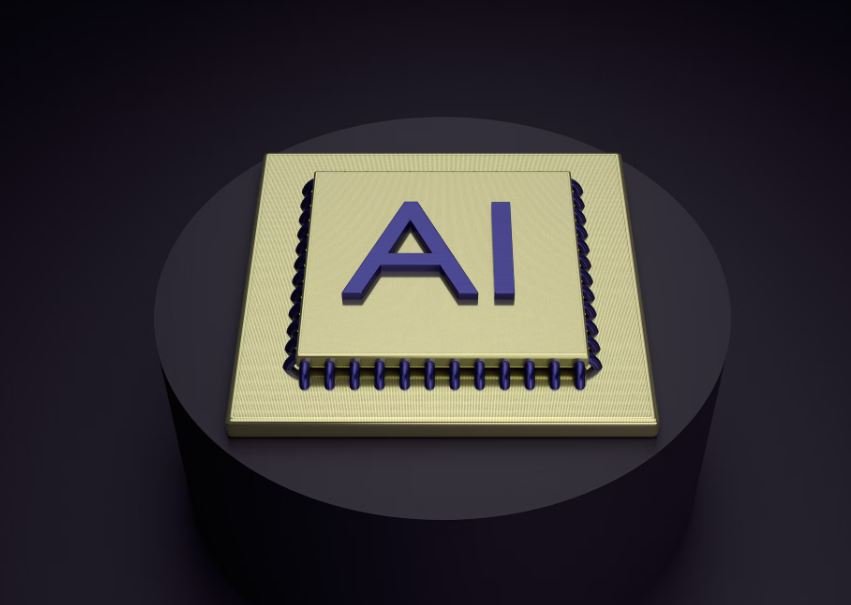No Code Web Application
Web application development has traditionally been a complex and time-consuming process, requiring knowledge of programming languages, databases, and server management. However, with the rise of no code web application tools, creating functional and professional-looking web applications has never been easier. In this article, we’ll explore what no code web applications are, their benefits, and how you can get started with them.
Key Takeaways:
- No code web applications allow users to create web applications without writing code.
- These tools offer a visual interface, drag-and-drop functionality, and pre-built templates.
- No code web applications can save time, reduce costs, and empower non-technical users to create their own apps.
- Popular no code web application platforms include Bubble, Adalo, and OutSystems.
Imagine being able to develop a fully functional web application without needing to write a single line of code. With no code web application tools, this is now a reality.
No code web applications, also known as visual development platforms or low-code platforms, provide a way for individuals with little to no coding experience to create and deploy web applications. These tools typically offer a visual interface where users can build their applications using drag-and-drop functionality, pre-built templates, and easily customizable components. By eliminating the need for coding, no code web applications streamline the development process and enable individuals with diverse skill sets to create functional and visually appealing web applications.
What makes no code web applications even more remarkable is that they do not sacrifice functionality or flexibility. Users can create complex and powerful applications by connecting pre-built components and leveraging advanced features provided by the platform.
The Benefits of No Code Web Applications
No code web applications offer several advantages over traditional coding-based development methods. Here are some of the key benefits:
- Rapid Development: No code web applications dramatically reduce development time by eliminating the need to write code from scratch. Users can leverage pre-built components and templates to quickly create fully functional applications.
- Time and Cost Savings: With no code web applications, businesses can save on development costs by reducing their reliance on professional developers. Non-technical users can create and maintain their own applications, freeing up valuable resources.
- Empowering Non-Technical Users: No code web applications empower individuals without coding knowledge to bring their ideas to life and create their own applications. This democratizes the app development process, making it accessible to a wider range of people.
- No Code + Customization: While no code web applications eliminate the need for writing code, they still offer powerful customization options. Users can tailor their applications’ appearance and functionality to meet their specific requirements.
One of the most exciting aspects of no code web applications is their ability to level the playing field, allowing individuals without coding experience to compete with professional developers in creating innovative web applications.
Popular Platforms for No Code Web Applications
Several platforms have emerged as popular choices for building no code web applications. Let’s take a closer look at some of these platforms and what they offer.
| Platform | Key Features |
|---|---|
| Bubble | Drag-and-drop interface, database integration, and advanced workflows. |
| Adalo | Customizable UI components, data modeling, and native mobile app generation. |
| OutSystems | Enterprise-grade development platform, with AI-assisted development and integration capabilities. |
Each platform has its own strengths and unique features, allowing users to choose the one that best aligns with their requirements and goals.
Getting Started with No Code Web Applications
If you’re eager to explore the world of no code web applications, here are a few steps to get you started:
- Define your idea: Clearly define the purpose and functionality of your web application.
- Choose a platform: Research and select a no code web application platform that best suits your needs and budget.
- Learn the platform: Familiarize yourself with the platform’s interface, functionalities, and available resources (tutorials, documentation, forums).
- Start building: Begin creating your application by dragging and dropping components, setting up logic, and customizing the design.
- Test and iterate: Continuously test your application, gather feedback, and make improvements to enhance its usability and effectiveness.
- Launch and maintain: Once you’re satisfied with your application, deploy it on a hosting platform and keep supporting and updating it as needed.
By following these steps, you’ll be well on your way to creating your own no code web application.
No code web applications have revolutionized the way web applications are developed. By offering a simplified and accessible approach to application development, these tools empower individuals without programming knowledge to bring their ideas to life. With the right platform and some creativity, anyone can now create and deploy functional web applications.

Common Misconceptions
1. No Code means no programming at all
1. No Code means no programming at all
One common misconception about no code web applications is that they require absolutely no programming knowledge or skills. While it is true that no code platforms allow users to build web applications without writing traditional code, some level of understanding of programming concepts is still necessary. Users need to have a basic understanding of logic and problem-solving, as well as being familiar with the features and functionality of the no code platform they are using.
- No code platforms still require an understanding of logic and problem-solving.
- Familiarity with the features and functionality of the platform is essential.
- No code does not mean no understanding of programming concepts.
2. No Code applications lack scalability and customization
Another misconception about no code web applications is that they are limited in terms of scalability and customization. Some people believe that since no code platforms provide pre-built components and templates, the resulting web applications will be generic and lack the ability to scale or be customized according to specific needs. However, many no code platforms offer robust tools for customization and scalability, allowing users to create complex applications that can grow and adapt over time.
- No code platforms provide tools for customization and scalability.
- Pre-built components and templates can be customized to fit specific needs.
- No code applications can grow and adapt over time.
3. No Code platforms are only suitable for simple applications
Some people mistakenly believe that no code platforms are only suitable for creating simple web applications. While it is true that no code platforms excel in quickly building simple applications, they can also be used to develop complex and feature-rich applications. With the availability of advanced features like data modeling, integrations, and automation, no code platforms can handle a wide range of application requirements, from simple to complex.
- No code platforms can develop complex and feature-rich applications.
- Advanced features like data modeling and integrations are available.
- No code platforms can handle various application requirements.
4. No Code applications are less secure than traditional coding
One misconception is that no code web applications are less secure than those created through traditional coding methods. The belief is that by using pre-built components and templates, vulnerabilities and security flaws are more likely to be present. However, many no code platforms follow strict security protocols and offer robust security features to protect web applications. In fact, these platforms often handle security concerns more effectively than traditional coding, as they have dedicated teams constantly monitoring and updating security measures.
- No code platforms follow strict security protocols.
- Robust security features are available to protect web applications.
- No code platforms often handle security concerns more effectively than traditional coding.
5. No Code platforms eliminate the need for developers
Another common misconception is that no code platforms eliminate the need for developers altogether. While no code platforms empower individuals with limited technical backgrounds to build web applications, developers still play a crucial role in the process. They can focus on more complex tasks, such as integrations, advanced customization, and maintaining the underlying infrastructure of the application. Additionally, developers can work alongside no code users to provide guidance, support, and enhance the functionality of the web application.
- No code platforms empower individuals with limited technical backgrounds.
- Developers can focus on more complex tasks and advanced customization.
- Developers can work alongside no code users to provide guidance and support.

Top 10 Countries with the Fastest Internet Speeds
A reliable, high-speed internet connection has become a necessity in today’s digital age. This table showcases the top 10 countries with the fastest internet speeds, allowing users to browse, stream, and download effortlessly.
| Country | Average Internet Speed (Mbps) |
|---|---|
| South Korea | 157.24 |
| Norway | 147.71 |
| Sweden | 146.07 |
| Hong Kong | 141.45 |
| Switzerland | 135.19 |
| Finland | 134.07 |
| Singapore | 133.82 |
| Japan | 124.64 |
| Denmark | 123.50 |
| United States | 118.01 |
Global Smartphone Market Share by Operating System
Smartphones have revolutionized the way we connect and communicate. Here, we present the market share of various operating systems, giving insight into user preferences and industry dominance.
| Operating System | Market Share |
|---|---|
| Android | 72.2% |
| iOS | 27.9% |
| Windows | 0.3% |
| BlackBerry OS | 0.2% |
| Others | 0.4% |
World’s Top 10 Highest-Grossing Films of All Time
The film industry captivates audiences worldwide, and these blockbuster movies made a significant impact both culturally and financially. Let’s take a look at the highest-grossing films of all time.
| Film | Box Office Revenue (USD) |
|---|---|
| Avengers: Endgame | $2,798,000,000 |
| Avatar | $2,790,439,000 |
| Titanic | $2,194,439,542 |
| Star Wars: The Force Awakens | $2,068,223,624 |
| Avengers: Infinity War | $2,048,000,000 |
| Jurassic World | $1,670,400,637 |
| The Lion King (2019) | $1,656,943,394 |
| The Avengers | $1,518,812,988 |
| Furious 7 | $1,516,045,911 |
| Avengers: Age of Ultron | $1,402,809,540 |
Most Popular Social Media Platforms Worldwide
Social media has revolutionized communication and networking. Discover the most popular social media platforms, allowing users to connect, share, and interact in a global online community.
| Platform | Number of Users (in billions) |
|---|---|
| 2.8 | |
| YouTube | 2.3 |
| 2 | |
| Facebook Messenger | 1.3 |
| 1.2 | |
| 1.1 | |
| TikTok | 1.1 |
| 0.7 | |
| 0.5 | |
| 0.3 |
World’s Largest Tech Companies by Market Capitalization
Technology companies shape our modern world. This table presents the largest tech giants, ranked by market capitalization. These powerhouses drive innovation and influence various aspects of our lives.
| Company | Market Capitalization (USD) |
|---|---|
| Apple | $2.423 trillion |
| Microsoft | $2.21 trillion |
| Amazon | $1.777 trillion |
| Alphabet (Google) | $1.658 trillion |
| Tencent | $655 billion |
| $877 billion | |
| NVIDIA | $525 billion |
| Samsung | $518 billion |
| Intel | $485 billion |
| IBM | $109 billion |
World’s Top 10 Tallest Buildings
Architectural prowess is showcased in these stunning skyscrapers that pierce the sky. Explore the world’s tallest buildings, engineering marvels that redefine city skylines.
| Building | Height (meters) |
|---|---|
| Burj Khalifa (Dubai) | 828 |
| Shanghai Tower (Shanghai) | 632 |
| Abraj Al-Bait Clock Tower (Mecca) | 601 |
| Ping An Finance Center (Shenzhen) | 599 |
| Lotte World Tower (Seoul) | 555 |
| One World Trade Center (New York City) | 541 |
| Guangzhou CTF Finance Centre (Guangzhou) | 530 |
| Tianjin CTF Finance Centre (Tianjin) | 530 |
| CITIC Tower (Beijing) | 528 |
| Tianjin Chow Tai Fook Financial Center (Tianjin) | 530 |
Premier League Top Scorers for the 2020/2021 Season
The Premier League attracts worldwide attention, and goals hold a special place in the hearts of fans. Let’s recognize the top goal scorers who lit up the field during the 2020/2021 season.
| Player | Team | Goals |
|---|---|---|
| Harry Kane | Tottenham Hotspur | 23 |
| Mohamed Salah | Liverpool | 22 |
| Bruno Fernandes | Manchester United | 18 |
| Patrick Bamford | Leeds United | 17 |
| Jamie Vardy | Leicester City | 15 |
| Ilkay Gündogan | Manchester City | 13 |
| Callum Wilson | Newcastle United | 12 |
| Gareth Bale | Tottenham Hotspur | 11 |
| Ollie Watkins | Aston Villa | 14 |
| Son Heung-min | Tottenham Hotspur | 17 |
Percentage of Adults Who Own a Smartphone by Country
Smartphones have become ubiquitous, but ownership can vary around the world. This table displays the percentage of adults in different countries who own a smartphone, highlighting the global adoption of this technology.
| Country | Percentage of Adults Who Own a Smartphone |
|---|---|
| South Korea | 95.1% |
| Australia | 89.0% |
| Israel | 85.8% |
| United Kingdom | 82.3% |
| Germany | 76.8% |
| United States | 76.2% |
| Canada | 73.9% |
| Japan | 71.1% |
| France | 68.6% |
| China | 64.0% |
Global Energy Consumption by Source
Energy consumption is a crucial aspect of our lives and the sustainability of our planet. This table illustrates the global energy consumption by various sources, shedding light on our reliance on different forms of energy.
| Energy Source | Percentage of Global Energy Consumption |
|---|---|
| Oil | 33.5% |
| Natural Gas | 23.8% |
| Coal | 27.0% |
| Renewables | 13.2% |
| Nuclear | 4.5% |
The growth of technology has paved the way for the emergence of no-code web applications, revolutionizing application development. With the intuitive nature of these platforms, individuals with no coding experience can create fully functional web applications, significantly reducing development time and costs. This article showcased various fascinating facts and data, ranging from internet speeds in different countries, market shares of smartphone operating systems, highest-grossing films, top social media platforms, market capitalizations of tech companies, tall buildings around the world, premier league top scorers, smartphone ownership percentages, and global energy consumption by source. The continuous advancement of no-code web application platforms promises to further democratize technological innovation and empower individuals and businesses to bring their ideas to life in the digital realm.
No Code Web Application
Frequently Asked Questions
FAQs
What is a no-code web application?
A no-code web application is a software application that allows users to build and deploy web applications without writing any code.





